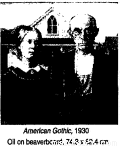题目内容
Books, Films and Plays
The novelist’s medium is the written word, one might almost say the printed word. Typically the novel is consumed by a silent, individual reader, who may be anywhere at the time. The paperback novel is still the cheapest, most portable and adaptable form of narrative entertainment. It is limited to a single channel of information---writing. The narrative can go, effortlessly, anywhere: into space, people’s head, palaces, prisons and pyramids, without any consideration of cost or practical possibility. In determining the shape and content of his narrative, the writer is restricted by nothing except purely artistic criteria. The novelist keeps absolute control over his text until it is published and received by the audience. He may be advised by his editor to revise his text, but if the writer refused to meet this condition no one would be surprised. It is not unknown for a well-established novelist to deliver his or her manuscript(手稿) and expect the publisher to print it exactly as written.
However, not even the most well-established playwright or screenplay writer would submit a script and expect it to be performed without any rewriting. This is because plays and motion pictures are cooperative forms of narrative, using more than one channel of communication.
The production of a stage play involves, as well as the words of the author, the physical presence of the actors, their voices and gestures, the “set” and possibly music. Although the script is the essential basis of both stage play and film, it is a basis for subsequent revision negotiated between the writer and the other creative people involved. They are given “approval” of the choice of director and actors and have the right to attend rehearsals(排演), during which period they may undertake more rewriting work. In the case of the screenplay, the writer may have little or no control over the final form of his work. Contracts for the production of plays protect the rights of authors in this respect.
In film or television work, on the other hand, the screenplay writer has no contractual right to this degree of consultation. While the script is going through its various drafts, the writer is in the driver’s seat, although sometimes receiving criticism from the producer and the director. But once the production is under way, artistic control over the project tends to pass to the director. This is a fact overlooked by most journalistic critics of television drama, who tend(unlike film critics) to give all the credit or blame for success or failure of a production to the writer and actors, ignoring the contribution, for good or ill, of the director.
1.Where might you find the passage?
A. In a textbook.
B. In a movie magazine.
C. In a travelling brochure.
D. In a shopping guide.
2.Which of these subtitles would be most appropriate?
A. Why does the future look good for writers of books, plays and films?
B. What do audiences want from these three forms of entertainment?
C. How do these forms of media compare for their producers?
D. What benefit can we get from these forms of media?
3.Why can the novelist expect the publisher to print the manuscript exactly as written?
A. Because the novelist keeps absolute control over his text.
B. Because the paperback novel is most portable and adaptable.
C. Because the novel is limited to a single channel of information---writing.
D. Because the novelist is seldom advised by editors to revise the text.
4.Which of the following statements is True according to the passage?
A. Playwrights envy the simplicity of the novelist’s work.
B. Experience in the theatre improves the work of screenplay writers.
C. Screenplay writers usually have the final say in how a TV drama will turn out.
D. Playwrights are frequently involved in revising their work.
5.What can be implied from the last sentence of the passage?
A. TV critics often blame the wrong people for the failure of a program.
B. The director is a determining factor in the future of a television drama.
C. Few people know that the screenplay writer is often criticized by the director.
D. It is urgent for the film critics to realize their mistakes.


